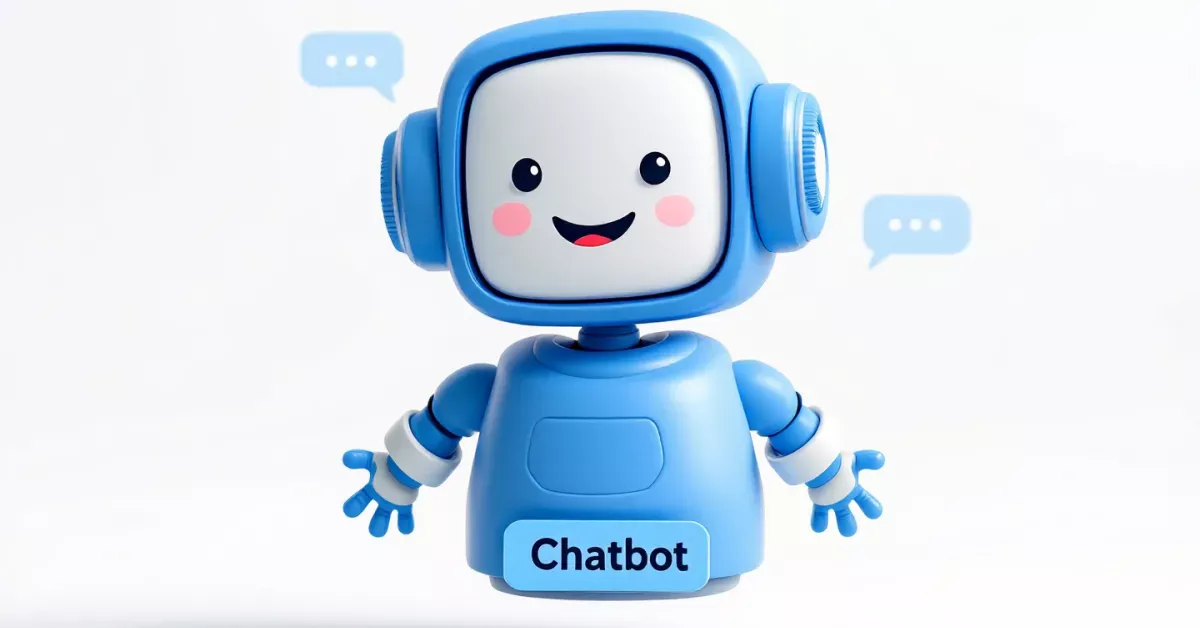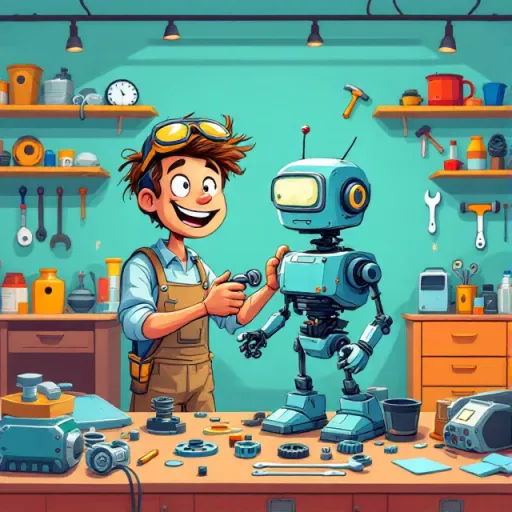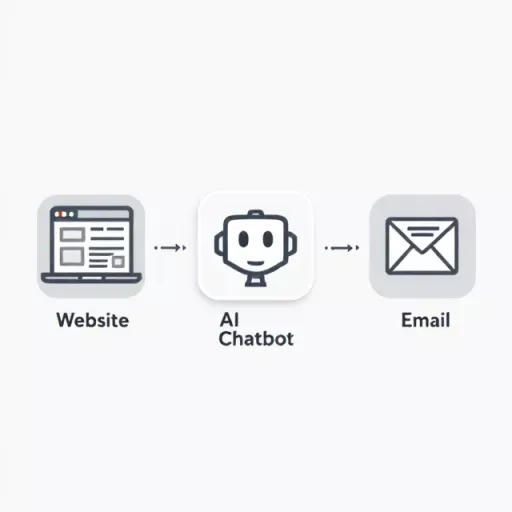In our busy online world, customers hope for quick answers and smooth support when they visit your website. For small businesses, being there for customers all the time can seem like a big ask. Trying to answer customer questions, run the business, and find ways to grow often means there isn’t much time or money left for a support team that works around the clock. But what if there was a clever, budget-friendly way to improve your website customer support and keep your customers happy, even when you’re not working?

Meet AI chatbots for customer service. These aren’t the stiff, annoying bots from years ago. Today’s Artificial Intelligence (AI) chatbots are smart tools made to understand and reply to customer needs in a natural and quick way. They can change how your small business connects with website visitors, offering instant help, gathering useful details, and giving you back time to focus on your main business activities. This article looks at how small businesses can use AI chatbots to improve their customer service, work smarter, and grow.
So, What Are These AI Chatbots Anyway?
Picture an AI chatbot as a virtual helper on your website. Unlike older “rule-based” chatbots that just followed strict, pre-set scripts (often leading nowhere and annoying users), AI chatbots are much cleverer. They use modern tech like Natural Language Processing (NLP) and machine learning.
- Natural Language Processing (NLP): This lets the chatbot understand everyday human language, including different ways of saying things, context, and even spelling mistakes. Customers can ask questions normally, without needing special words.
- Machine Learning: AI chatbots learn and get better from the conversations they have. The more they chat, the better they get at figuring out what users mean and giving correct, helpful replies.
Basically, these newer chatbots can have more realistic, human-like chats. They can grasp the reason behind a customer’s question, not just the words. This lets them do more things, like answering common questions (FAQs), helping users through steps, making interactions more personal, and even noticing how the user feels. For small businesses, this means you can offer automated customer service that feels quite personal and genuinely useful as pointed out by Voicespin.
Why Your Small Business Website Could Use an AI Chatbot

Putting an AI chatbot on your site isn’t just about using new tech; it’s about getting real benefits that can make a big difference to your small business’s success. Let’s look at the main good points:
1. Offer Instant Help, Day or Night
A huge plus for small businesses is being able to offer 24/7 support without needing staff on duty all the time. People browse and buy online at all hours, and their questions don’t just pop up during business hours. An AI chatbot is always there, ready to give instant answers to usual questions about your products, services, delivery, shop hours, or rules as mentioned by Chatbase. Getting help straight away makes customers happier – no one enjoys waiting – and can bring in leads or sales you might miss overnight or on weekends. Think about someone finding your site late at night with an important question; an AI chatbot can give them the answer they need, possibly making a sale while you’re asleep.
2. Lower Your Customer Service Spending
Hiring and training a big customer service team costs a lot, particularly for small businesses watching their pennies. AI chatbots provide a very cost-friendly customer service option. They can handle many common questions at the same time, meaning fewer human agents are needed to answer the same things over and over. This doesn’t always mean replacing your people, but rather helping them out. By letting the chatbot deal with simple, repeated questions, your human staff can use their time and skills to sort out trickier, more sensitive, or higher-value customer problems. This makes better use of your resources and cuts down the money spent on routine customer support.
3. Boost Your Lead Generation Efforts
Your website is a great spot to find potential customers, but only if you connect with visitors well. AI chatbots can work like non-stop lead generation helpers. They can greet website visitors, ask questions to see if they’re a good fit (like about their budget, needs, or timing), collect contact details, and even book appointments or demos. For example, a real estate agent’s chatbot could ask visitors about the type of property, area, and price range they want, immediately identifying them as a possible lead and maybe even setting up a viewing time an idea from Chatbase. This automatic process makes sure you get good leads anytime, even when your office is closed, keeping your sales opportunities flowing.
4. Create More Personal Customer Interactions
Customers like feeling noticed and understood. Modern AI chatbots can offer personal customer experiences by using user information (with proper permission and privacy care). They can say hello to returning visitors by name, mention past chats or buys, and give specific suggestions or help based on what they’ve looked at or said they like. An online shop’s chatbot, for instance, could suggest items similar to ones a customer looked at or bought before, making the shopping trip more relevant and interesting a benefit noted by Elite IT Team. This kind of personal touch can really lift interest, customer loyalty, and the number of people who buy.
5. Make Bookings, Orders, and Steps Easier
AI chatbots can automate many simple jobs beyond just answering questions. They can manage appointment scheduling for service businesses (like hairdressers, consultants, or clinics), take basic orders for cafes or takeaways, walk users through signing up, or help with simple troubleshooting. This automation saves staff time, lowers the risk of mistakes in bookings or orders, and gives customers a handy do-it-yourself option. A chatbot handling bookings, for example, can check availability instantly, confirm appointments, and send automatic reminders, meaning fewer people miss their appointments.
6. Find Useful Customer Information
Every chat a customer has with your chatbot can give you information. By looking at chatbot conversation records (while respecting privacy), small businesses can find useful customer information. You can see what questions people ask most, common problems they have, new trends, what customers like, and their thoughts on your products or services. This information is incredibly helpful for making business choices, improving marketing plans, making website content better, and creating new products or services that fit what customers really want.
Getting Started: Adding an AI Chatbot to Your Website

Putting an AI chatbot on your small business website doesn’t need to be overly technical or scary. Many easy-to-use platforms are out there now. Here’s a simple guide to get you going:
Step 1: Figure Out Your Goals and Needs
Before you start, be clear about what you want the chatbot to do. What are the main issues you want to fix or tasks you want to make easier?
- Is it about answering common questions faster?
- Getting more leads after hours?
- Automating appointment bookings?
- Pointing users to the right information?
Knowing your main aims will help you pick the right kind of chatbot and guide its setup. Start simple – maybe just focus on answering your top 10 questions first.
Step 2: Pick the Right AI Chatbot Platform
There are many chatbot platforms available, from basic no-code tools to very flexible options for big companies. For small businesses, think about:
- Ease of Use: Look for platforms that are easy to understand, maybe with drag-and-drop features or ready-made templates, especially if you’re not very techy. Many platforms don’t need coding knowledge as Elfsight mentions.
- Features: Does it have the specific things you need (like forms to get leads, appointment booking, connection to your customer database)?
- Customisation: Can you change how the chatbot looks, its ‘personality’, and how conversations go to fit your brand?
- Integration: Can it link up with other tools you use, like your customer management system (CRM), email marketing tool, or helpdesk software? Chatbase notes integration can be tricky.
- Training Data: How easy is it to teach the chatbot? Some platforms let you just upload your current FAQs, help articles, or website text like DocsBot.ai does.
- Price: Check how they charge (e.g., monthly fee, per chat) and make sure it fits your budget.
Step 3: Plan Your Chatbot’s Personality and Conversation Path
Your chatbot represents your brand. Give it a name and decide on its personality – should it be just functional, friendly and relaxed, or business-like? Make sure its way of talking matches your brand’s style.
Next, plan how the conversations should go. How should it greet people? What questions will it ask? How will it reply to different kinds of questions? Think about different situations, including what it should do if it doesn’t know the answer (like passing the chat to a person). Start with easy paths for your main goals and add more later.
Step 4: Build and Teach Your Chatbot
This is where you use your chosen platform to create your chatbot.
- Knowledge Base: Give your chatbot the information it needs to answer questions correctly. This means putting in FAQs, product details, policy info, and links to important website pages. Platforms like DocsBot can learn from documents you already have.
- Conversation Paths: Create the chat flows you planned. Use the platform’s tools to make questions, answers, buttons, and choices.
- Initial Teaching: If you’re using an AI platform, give it examples of questions and answers. The more good information you give it, the smarter it gets. Some platforms use your website text or uploaded files for this.
Step 5: Test, Test, and Test Again!
Before you let your chatbot talk to your website visitors, testing it well is really important. Chat with it yourself, acting like different customers with different questions. Ask workmates or friends to try it too. Look for:
- Correct answers.
- Smooth conversation flow.
- Good handling of odd questions or mistakes.
- Whether connections work (e.g., does lead info go to your CRM properly?).
Find any problems, awkward sentences, or dead ends, and fix the chatbot.
Step 6: Go Live and Let People Know
When you feel good about it, put the chatbot on your website. Make it easy to see and use – often it’s a pop-up box in the corner or part of certain pages (like ‘Contact Us’ or product pages). Tell your visitors it’s there and what it can help with.
Step 7: Watch, Check, and Improve
Putting the chatbot live is just the start. Keep an eye on how it’s doing. Most platforms give you reports showing:
- How many chats it had.
- The most common questions asked.
- How often it solved the problem.
- User happiness scores (if you ask for them).
- Where people stop chatting or ask for a human.
Use this customer information to see where you can make things better. Add answers to new questions, adjust the chat flows, and change the chatbot’s replies based on how people really use it. Making regular updates is key to getting the most out of your chatbot and making sure it stays helpful.
Making the Chatbot Experience Great
Just having a chatbot isn’t the point; you want to give people a positive and helpful customer experience. Here are a few ideas:
- Be Clear: Let users know they’re talking to a bot, but also mention what it can do. Don’t try to make them think it’s a person.
- Keep it Friendly: Even though it’s automatic, the chat shouldn’t feel cold. Use a friendly, conversational style that fits your brand. Add a bit of personality if it suits.
- Offer a Way Out: Always give people a clear and simple way to talk to a human if the chatbot can’t help or if they’d rather speak to someone. This stops frustration and makes sure difficult problems get sorted properly. Chatbase suggests this for tricky questions.
- Keep it Simple: Don’t give users too many choices at once. Lead them through the chat step-by-step. Use buttons or quick reply options for common choices.
- Focus on Being Helpful: The main aim is to help the user get what they need quickly and easily. Make sure answers are right, short, and lead to a solution.
Getting Past Possible Roadblocks

While the upsides are big, small businesses might hit some bumps when setting up AI chatbots. Knowing about these can help you handle them:
- Not Much AI Know-How: Solution: Pick easy-to-use, no-code platforms with good help guides. Start simple and learn as you go.
- Connecting to Other Systems: Solution: Choose platforms that already connect to tools you use (CRM, email, etc.). If you need a special connection, think about possible developer costs or look at tools like Zapier.
- Keeping Data Private: Solution: Use well-known platforms that follow data protection rules (like GDPR). Tell users clearly what information is gathered and how it’s used. Have a clear privacy policy they can see through the chatbot.
- Dealing with Difficult Questions: Solution: Set up the chatbot to know when it’s stuck and offer a smooth transfer to a human agent when a question is too hard, sensitive, or needs understanding.
- Worries About Cost: Solution: Many platforms have affordable plans for small businesses, sometimes even free versions or trials. Work out the possible return based on time saved and leads gained.
The Future is Chatting
AI chatbot tech keeps getting better. We can expect future bots to get even smarter at understanding context, sensing user feelings for kinder replies, using data to guess customer needs, and working smoothly with voice assistants and maybe even augmented reality as Chatbase foresees. For small businesses, this means even more ways to automate, personalise, and improve customer chats in the future.
Ready to Try AI Chatbots?
For small businesses wanting to offer great website customer service, keep up with competitors, and work efficiently, AI chatbots aren’t just a future idea – they are a useful and strong tool available now. By giving instant 24/7 support, personalising chats, automating simple tasks, getting leads, and providing helpful information, they can greatly improve your customer experience and give you back precious time.
Starting might feel like a big move, but by setting clear goals, picking the right platform, focusing on being helpful, and planning to keep improving, you can successfully use an AI chatbot that gets real results for your business. Don’t let limited resources stop you from offering great customer service – it’s time to let AI give you a hand and change how you connect with your customers online.


